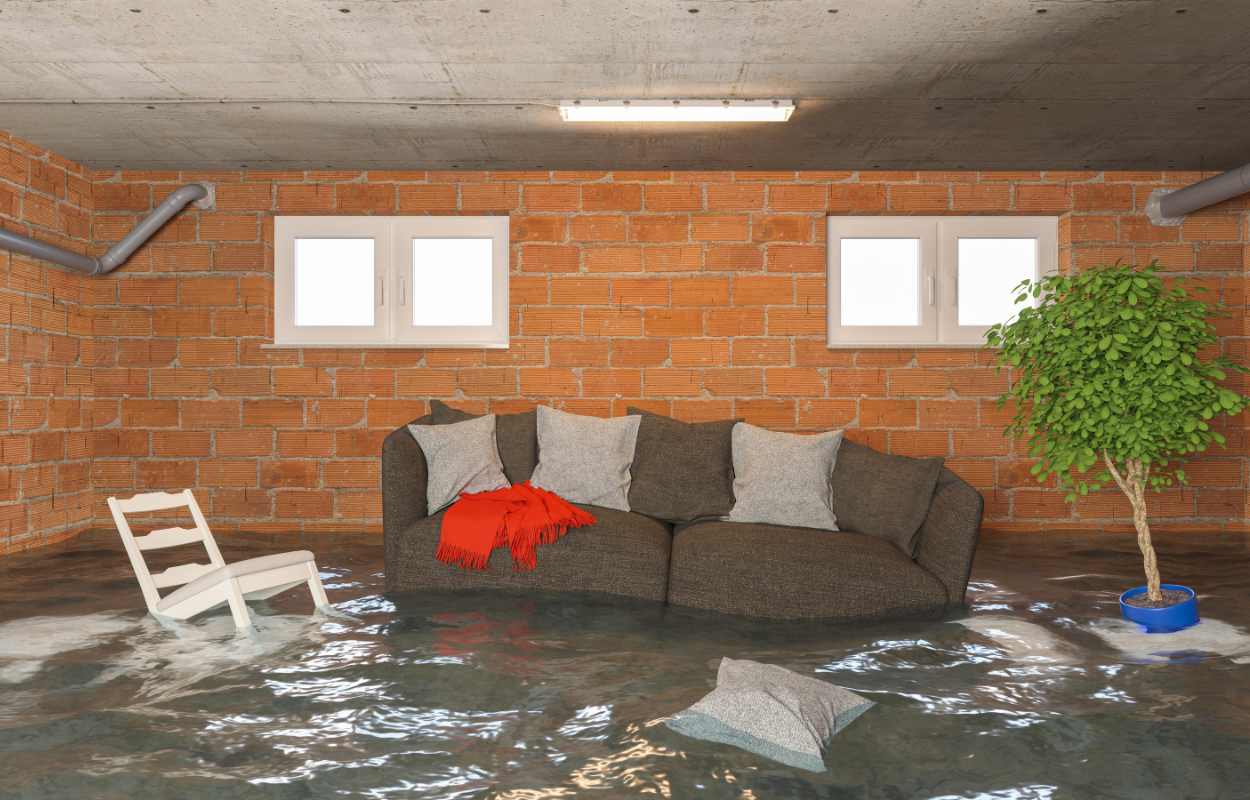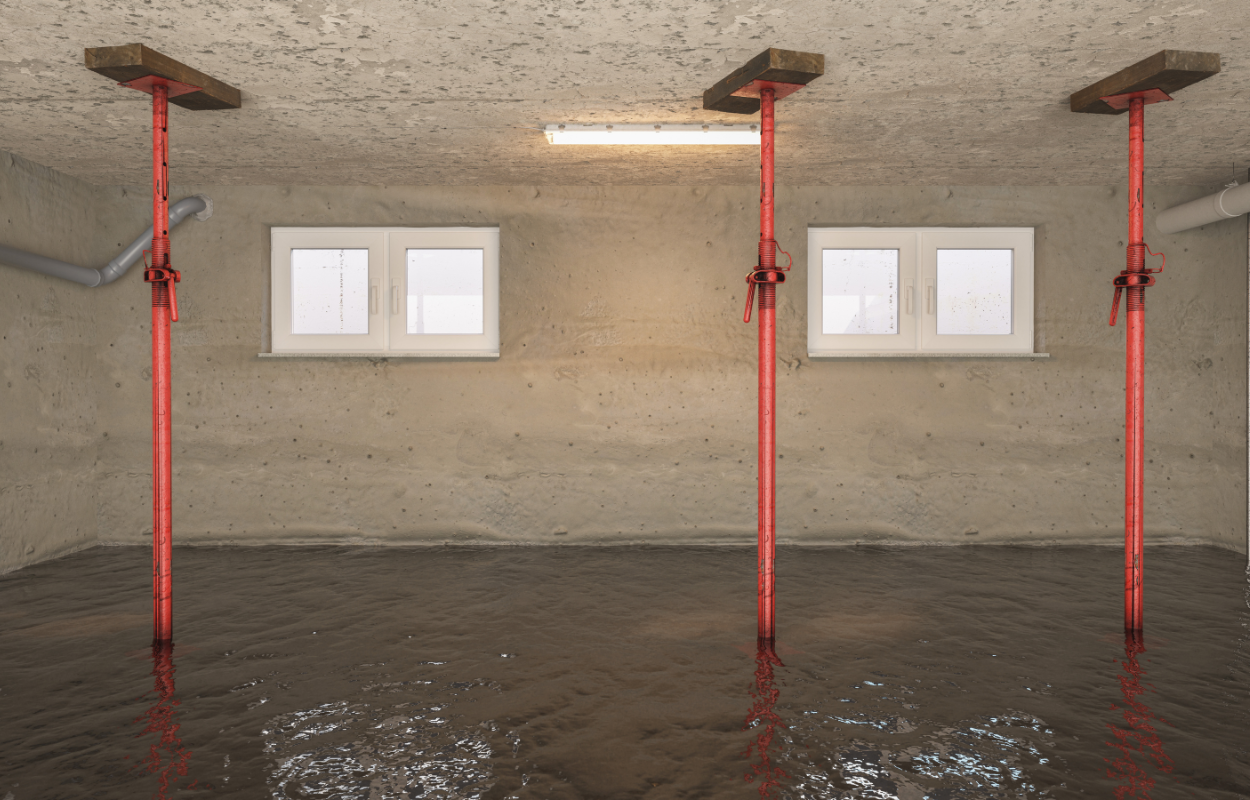
Sewage Cleanup Tips: What To Do When Sewer Water Floods Your Home
Sewage backups can cause severe damage to your property and pose significant health risks. Proper sewage cleanup is crucial to mitigate these dangers and restore a safe and habitable environment.
This article provides top tips for effective sewage cleanup, compares professional versus DIY approaches, and highlights essential preventive measures.
Additionally, we will address frequently asked questions and outline the top hazards of sewage floodwater.
Let’s get right into it!
Steps To Take After A Sewage Floods Into Your Home
- Ensure Safety First
- The first and most critical step is to ensure safety. Evacuate the affected area immediately to avoid exposure to harmful contaminants. If the sewage backup is extensive and there’s a risk of electrical hazards, turn off the electricity to the affected area if it is safe to do so. Contact a licensed electrician if needed.
- Protective Gear
- When dealing with sewage, wearing protective gear is essential. This includes gloves, masks, waterproof boots, and possibly even goggles. Protective clothing helps prevent direct contact with contaminants and reduces the risk of infections.
- Stop the Source
- If possible, identify and stop the source of the sewage backup. This may involve turning off the main water supply or fixing a broken pipe. If the backup is due to an external issue, such as a municipal sewer problem, contact your local utility service immediately.
Professional vs. DIY Cleanup
- When to Call a Professional
- While minor sewage spills can sometimes be managed with DIY methods, significant backups should always be handled by professionals. Call a professional water damage restoration company if the backup covers a large area, affects multiple rooms, or has been sitting for an extended period. Professionals have the equipment, expertise, and protective gear to handle hazardous materials safely and thoroughly.
- DIY Cleanup Basics
- For small, contained spills, you might attempt DIY cleanup. Use household cleaning supplies like bleach and disinfectants. However, DIY efforts have limitations, especially when it comes to thorough decontamination and drying. Always err on the side of caution and consult professionals when in doubt.
Steps For Effective Sewage Cleanup
- Remove Standing Water
- Removing standing water is the first step in the cleanup process. Use pumps, wet vacuums, and mops to extract as much water as possible. Proper water extraction reduces the risk of further damage and speeds up the drying process.
- Dispose of Contaminated Materials
- Porous materials like carpets, upholstery, and drywall that have been contaminated by sewage must be disposed of. Non-porous items like metal and plastic can often be cleaned and disinfected. Follow local regulations for the disposal of contaminated materials to ensure safety.
- Clean and Disinfect Surfaces
- Clean all affected surfaces with a strong disinfectant. Use bleach solutions or professional-grade disinfectants to kill bacteria and pathogens. Scrub surfaces thoroughly, paying special attention to crevices and hard-to-reach areas.
- Dry the Area Thoroughly
- Drying is a crucial step to prevent mold growth and structural damage. Use fans, dehumidifiers, and open windows to promote air circulation. Industrial dehumidifiers are particularly effective in reducing moisture levels quickly.
- Prevent Mold Growth
- Monitor moisture levels continuously and use anti-microbial treatments to prevent mold growth. Professionals often use specialized equipment like hygrometers to measure moisture content in the air and materials.
Preventing Future Sewage Backups
- Regular Maintenance
- Schedule regular inspections and maintenance of your plumbing system. Regular maintenance can identify potential issues before they become severe problems.
- Proper Waste Disposal
- Educate household members on what can and cannot be flushed or poured down the drain. Avoid flushing items like sanitary products, diapers, and grease, which can clog pipes and cause backups.
- Install Preventive Devices
- Consider installing backflow valves and other preventive devices to protect your home from sewer backups. These devices are designed to prevent sewage from entering your home during heavy rainfall or system overloads.
FAQs
- What are the health risks of sewage exposure?
- Exposure to sewage can cause illnesses such as gastroenteritis, hepatitis, and respiratory infections due to harmful bacteria, viruses, and parasites.
- How long does it take to clean up after a sewage backup?
- Cleanup time varies depending on the extent of the damage but typically ranges from a few days to a week for thorough cleaning and drying.
- Can I stay in my home during the cleanup process?
- It depends on the severity of the sewage backup. For minor incidents, it may be safe, but for extensive contamination, it’s advisable to stay elsewhere until the cleanup is complete.
- What items can be salvaged after a sewage backup?
- Non-porous items like metal, plastic, and some hardwoods can often be cleaned and disinfected. Porous items like carpets and upholstered furniture may need to be discarded.
- How can I prevent mold growth after a sewage backup?
- Ensure thorough drying, monitor moisture levels, and use anti-microbial treatments to prevent mold growth.
- Does insurance cover sewage cleanup?
- Coverage varies by policy. Review your homeowner’s insurance and consider adding a sewage backup rider for additional protection.
- What causes sewer backups?
- Common causes include blockages in the sewer line, tree root infiltration, heavy rainfall overwhelming the system, and pipe damage.
- How can I prevent future sewer backups?
- Regular maintenance, proper waste disposal, and installing backflow prevention devices can help prevent future backups.
- What professional services are available for sewage cleanup?
- Professional services include water extraction, cleaning and disinfecting, drying and dehumidifying, mold prevention, and structural repairs.
- How do I choose a reputable sewage cleanup company?
- Look for companies with certifications, positive reviews, and experience in sewage cleanup. Ask for references and verify their credentials.
Top Hazards Of Sewage Flood Water
Health Risks: Exposure to bacteria, viruses, and parasites can lead to severe illnesses such as gastroenteritis and hepatitis.
Mold Growth: Sewage floodwater creates a perfect environment for mold to thrive, leading to respiratory issues and allergies.
Structural Damage: Prolonged exposure to water can weaken the structural integrity of buildings, causing wood rot and foundation damage.
Electrical Hazards: Water and electricity are a dangerous combination, posing risks of electric shocks and fires.
Toxic Gases: Sewage contains harmful gases like methane and hydrogen sulfide, which can cause respiratory issues and other health problems.
Chemical Contamination: Sewage water can contain hazardous chemicals from industrial waste, posing additional health risks.
Pest Infestations: Standing sewage water attracts pests such as rodents and insects, which can spread diseases.
Corrosion: Metal pipes, fittings, and structures can corrode when exposed to sewage, leading to long-term damage and expensive repairs.
Environmental Impact: Contaminated water can seep into the ground, polluting soil and water sources, affecting plants, animals, and humans.
Costly Repairs: Sewage backups can result in extensive property damage, leading to high repair costs and potential loss of valuables.
Conclusion
Proper sewage cleanup is essential to ensure the safety and health of your home or business. By following the steps outlined above and seeking professional help when necessary, you can effectively manage sewage backups and minimise damage.
Preventive measures, regular maintenance, and understanding the risks associated with sewage floodwater can help you protect your property from future incidents. If you face a sewage backup, act quickly and consult a professional sewage cleanup company to ensure a thorough and safe restoration process.
If you have any questions about our article, “Mould Removal In Oshawa: We Answer The Top 100 Frequently Asked Questions” or need water damage services, feel free to call us at 1-833-WE-DRY-IT or chat with us on social media or LiveChat!
Related Posts
Fire Damage Restoration Articles
The Dos And Don’ts Of Commercial Fire Damage
Forest Fire House Damage: What To Do After Your House Is Damaged By A Forest Fire And Who to Call?
Fire prevention tips for the summer
How to clean up after a house fire
Fire damage restoration checklist
Fire damage tips: 6 hazards property owners miss
How smoke from fires can negatively affect your health
What are the most common causes of house fires?
10 helpful smoke damage cleaning tips
Mould Removal Restoration Articles
Is Bathroom Mould Dangerous? Powerful Mould Prevention Tips Inside
Dangers Of Bathroom Mould And Tips On How To Clean And Prevent It
Got Bathroom Mould? Here Are Some Must-Know Bathroom Mould Cleaning Tips
5 Signs You Have Mould Growing In Your Walls
“Can I Remove Mould Myself?” Our Mould Removal Experts Have Answers
7 Must-Know Reasons Why You Should Get A Mould Inspection Before Buying A House
Does Mould Attract Bugs? Yes And Here’s What Kind And Why
How To Remove Mould From The Attic [Mould Prevention Tips Inside]
How Rain Causes Mould Growth-Prevention Tips Included
Must-Know Tips: How To Remove Mould In Your Basement
Water Damage Restoration Articles
How to prevent home storm damage
What you can expect from a fire damage restoration company
Water damage prevention tips from the most common problems we’ve seen
Top causes of water damage in commercial buildings and how to find them
Must-know water damage tips: What to do after your house floods
What does good water damage restoration look like?
DIY water damage restoration and the hidden dangers
How to choose the right water damage company
Flast floods: What to do before, during and after a flash flood
What to do when your attic leaks?
This is why water damage is a silent home killer
Related Water Damage Services
Fire damage restoration services
Water damage restoration services
Emergency cleanup services
Mould removal services
Weather damage services


